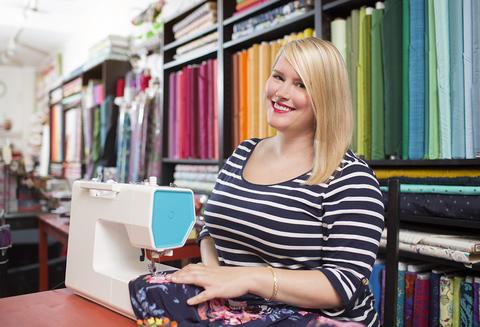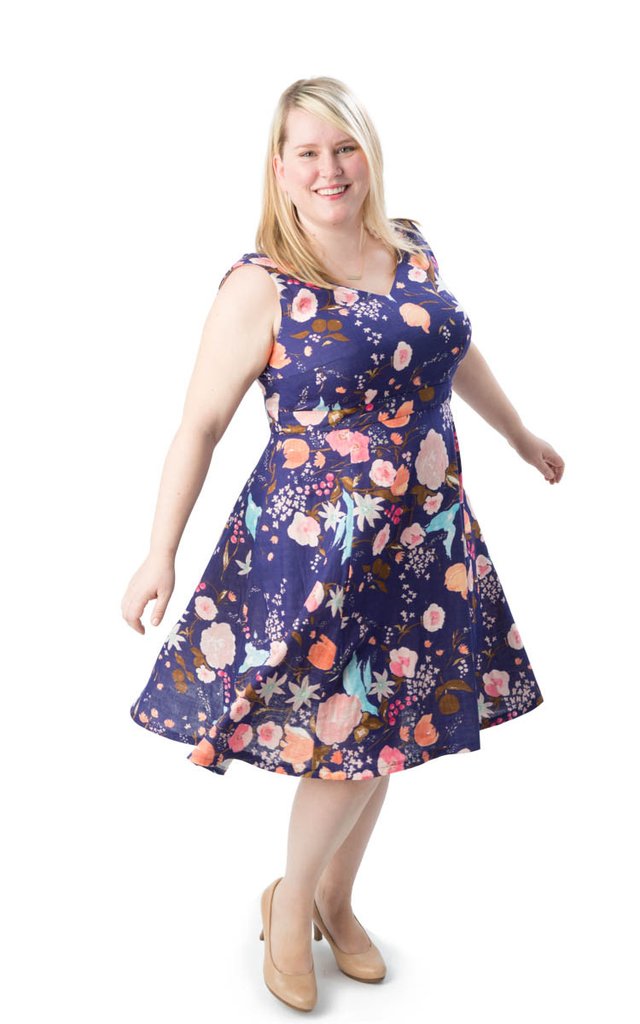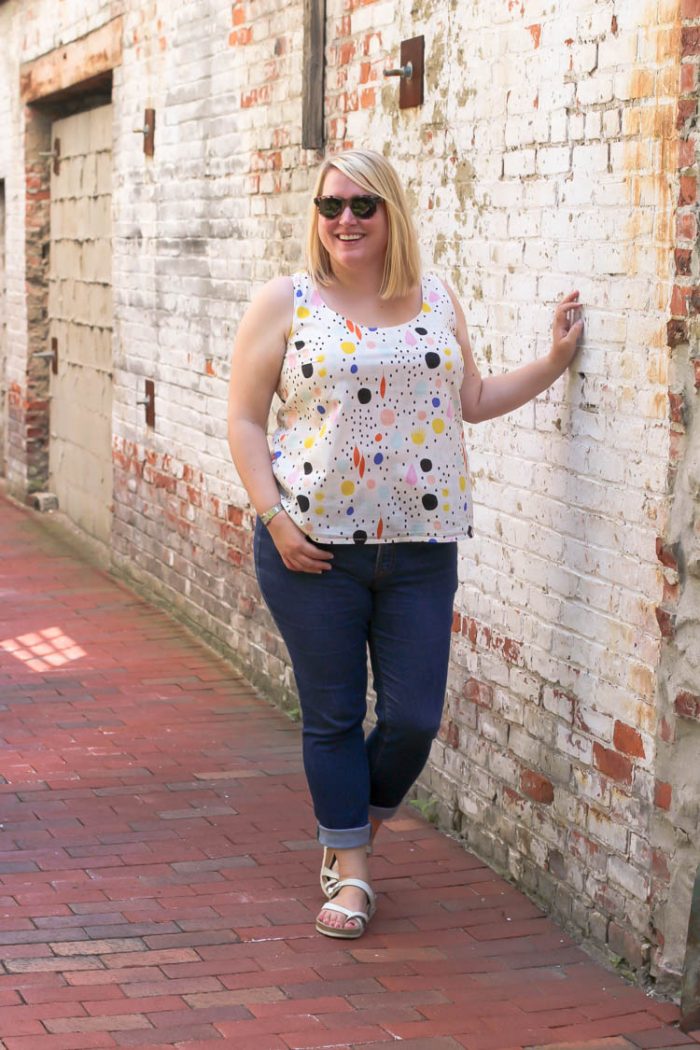
Many people who have creative businesses landed in their current profession unexpectedly. Even if you went to art school or business school my bet is that it would have been hard to predict what your current careers would look like.
In this series on my blog I’m exploring what that winding path looked like for some of the most successful creative business owners I know. What was their first job and are there any lessons they learned then that are still applicable in their current work?
Today we’ll hear from Jenny Rushmore. Jenny is a sewing pattern designer whose line of garment patterns for plus sized women, Cashmerette, has taken the sewing world by a storm. Jenny identified an area in the market that needed to be filled and she stepped up to fill it with beautiful, classic patterns that show off curves with a great fit.
Jenny wasn’t always a sewing pattern designer. In fact she started off in a very different field.
Here’s Jenny with the story of her first job:
+++++

My first post-college job was working as an assistant brand manager at Procter & Gamble in Geneva, Switzerland. 16 years later, I run a plus-size sewing pattern company, Cashmerette in Boston, MA.
I started my first job at 20, straight out of college, and it was quite the shock to the system! Working for such an enormous company like P&G, it became clear very quickly that my usual spur-of-the-moment working style wouldn’t work, because so many people had to be involved in decisions.
I quickly learned the P&G way, which is to be very process oriented: how can each project and action be standardized, and codified? How can something be explained clearly, and very precisely? In fact, we were forced to write all our documents on a single sheet of paper (a bit shock after doing a History degree!) and spent countless hours boiling down business plans and rationales into extremely concise language.

Jenny wearing her Upton Dress pattern.
I brought this process-driven approach into my work with Cashmerette: it doesn’t sound sexy, but it’s incredibly valuable. I created set actions and check lists for all my pattern development and launches – my Excel sheets are legion!
The approach of having a pipeline ready in advance was also important to me, and right now I have completed all the pattern releases for 2016, and am working on 2017 – very much the P&G way, and an approach which helps reduce my stress as well as allow for contingencies.

Jenny wearing her Springfield Top.
Finally, I’m really committed to clear and precise communication, and that helped with writing my pattern instructions. When you’re paying for each sheet of paper to be printed, you want to be short – but you also want to be as clear as possible for your customers. I think the long days being drilled for precision at P&G really helped me figure out how to do that.
Ultimately, I’m glad to be able to do a more creative and less regimented job these days – but I am very grateful to P&G for what they taught me which helps me today!
+++++
If you have a story to tell about your first work experience I’d love to hear it. We are shaped by each of our life experiences and often those that take place early in our live are especially formative.
I love the way you work with fabrics. Your clothes are beautiful and have wonderful designs. Keep it up!!
My first job was with Cambridge University Press in Cambridge (England). I worked in the Schoolbooks department, working on Modern Languages textbooks. I learnt editing, sub-editing, proof-reading and picture research skills during that time. These are all useful to me now I am a pattern-writer and a blogger. I found out about making a mistake, too: I once made a one digit error in the ISBN number where it appeared inside a book we published. My boss made me go down into the warehouse and correct by hand every single copy of the book in that print-run – several thousand!